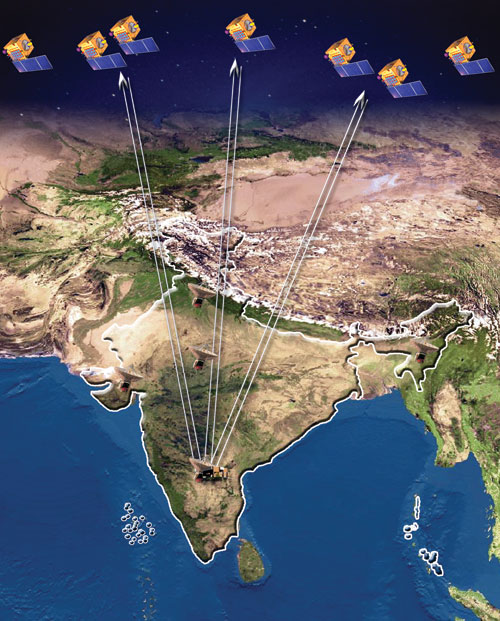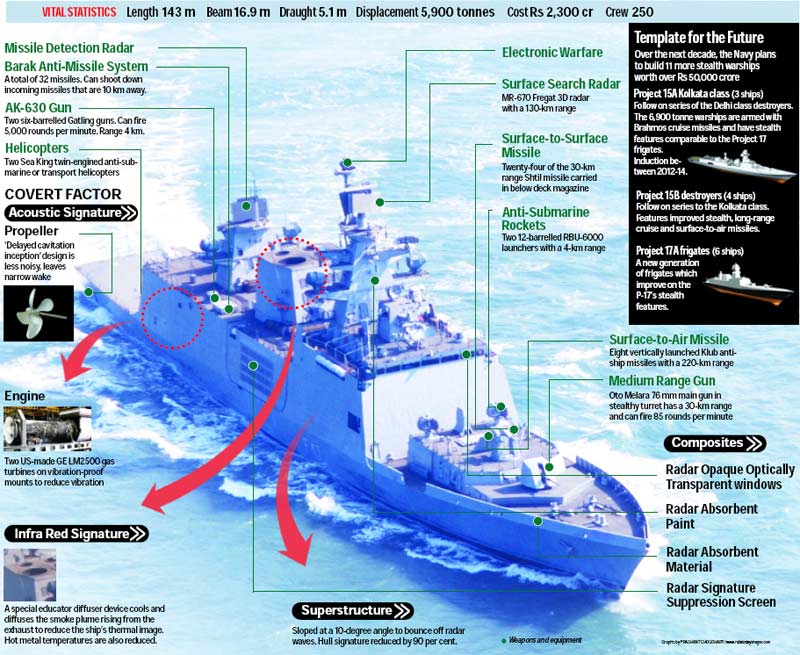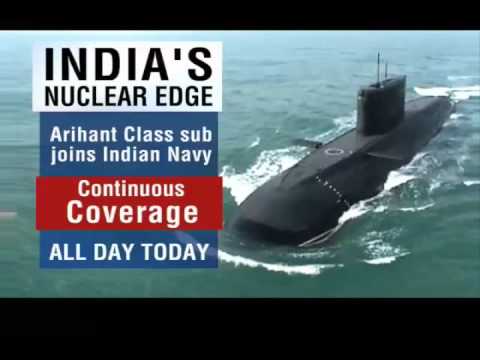The Vikrant class aircraft carriers are the first aircraft carriers of the Indian Navy to be designed and built in India. They are being built by Cochin Shipyard Limited (CSL).
The Vikrant class carriers will be the largest warships built by CSL.
The early warning sensors and anti-aircraft missile capability of the first aircraft carrier is likely to be similar to that of the Kolkata class destroyers. CSL expects the Navy to place the order for the second carrier of the class 2010, and work is planned to begin in 2010.
The first carrier will feature a ski-jump in STOBAR (Short Take-Off But Arrested Recovery) configuration. The deck is designed to enable aircraft such as the MiG-29 and smaller to operate from the carrier.
The Vikrant class is designed to deploy up to 40 aircraft, primarily the Mikoyan MiG-29K and the HAL Tejas Mark 2, including 10 Kamov Ka-31 or HAL Dhruv helicopters.
The naval version of HAL Tejas is hoped to be ready by the time INS Vikrant is commissioned.
IAC1 will operate a mix of MiG-29K and HAL Tejas.On 18 January 2010,it was reported that India and Russia were close to signing a deal for 29 Mig 29k fighters to operate from IAC1.In addition,the navy signed a deal for six naval HAL Tejas.
IAC2 could have a CATOBAR layout, because IN showed interest in the new US Electromagnetic Aircraft Launch System . Among the five aircraft for which the Indian Navy has sent Requests for Information (RFI) are the F-35C, the carrier-based variant of the F-35 Lightning II , the F/A-18E/F Superhornet (made by Boeing for the US Navy), Eurofighter Typhoon (EADS supported by a European consortium), Sukhoi for Sukhoi Su-33, SAAB for Sea Gripen (version of Gripen adapted for carrier operations) and France’s Dassault Aviation for the Rafale.
Status
The keel for the lead vessel of the class, INS Vikrant, was laid by the defence minister A.K Antony at the Cochin Shipyard on 28 February 2009. The ship will use modular construction. A total of 874 blocks will be joined together to speed up the building process. By the time the keel was laid, 423 blocks weighing over 8,000 tons, were completed.
The vessel will be launched in 2010 when it would have completed some 20,000 tonnes, including the hull, as it cannot be launched at a higher displacement from the building bay. After about a year’s development in the refit dock, it will be launched again when all major components and everything underwater would be in place. Only outfitting would then remain. As per the CCS (Cabinet Committee on Security) plan, sea trials were initially planned to commence in 2013, with the ship to be commissioned in 2014.
The order for the second aircraft carrier in the series is expected to be placed by 2010. The second carrier is planned to be inducted into the Indian Navy by 2017. The second aircraft carrier is said to be of higher tonnage of above 50,000 tons and will utilise steam catapults. A 65,000-tonne IAC-II is on the drawing board. ‘‘It will be much bigger and capable of operating fighters, AEW (airborne early-warning) aircraft, tankers etc,’’ Admiral Verma said.























